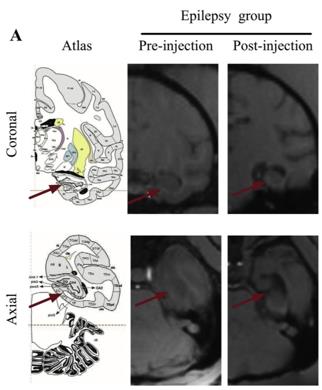Creative Biolabs is sophisticated in establishing a high-quality non-human primate (NHP) model of epilepsy. With the start of art facilities, the professional R&D team, and the most stringent QC system, we have assisted clients from all over the globe in a variety of drug development projects on our NHP Disease Models platform.
Neurological diseases are often considered as intractable diseases due to their complicated pathogenesis. In order to elucidate the causes of such tough diseases, proper neurological models are essential to obtain a deeper understanding of the mechanism underlying neurological diseases (e.g., Parkinson's disease, spinal cord injury, and cerebral stroke, etc.) and thus to develop potential clinical therapeutic strategies.
Advantages of Non-human Primates (NHPs) Neurological Models
NHPs are the best preclinical models of human neurological diseases since NHP brains have the closest genetic, neurochemical, neurophysiological, and cellular structure characteristics to human brains. Therefore, NHP neurological models are adopted by more and more scientists in investigating the pathogenesis of human neurological diseases and evaluating the efficacy of therapies in pre-clinical experiments.
What is Epilepsy?
Epilepsy is a chronic disease caused by the sudden abnormal discharge of brain neurons, leading to transient brain dysfunction. Due to the different starting locations and transmission modes of abnormal discharge, the clinical manifestations of epileptic seizures are complex and diverse, which can be manifested as paroxysmal motor, sensory, autonomic, consciousness, and mental disorders. The causes of epilepsy include genetic factors, brain diseases, systemic or systemic diseases, etc. As a chronic disease, epilepsy does not have much impact on patients in a short time, but frequent seizures have a serious impact on the patient's physical, mental, and intellectual ability.
What Can We Do in Research Against Epilepsy?
NHP models of epilepsy can assist us in understanding the pathophysiology and developing the potential epilepsy therapy in humans. Multiple epilepsy models have been reported in different NHP species including rhesus monkeys, pig-tailed monkeys, macaques, marmosets, and baboons. Based on the modelization method, these models can be generally sorted into two categories - the experimental model and the genetic nature model. In Creative Biolabs, we have rich experience in constructing experimental epilepsy models (including generalized and focal epilepsy models) in rhesus and macaque monkeys:
-
Generalized epilepsy models include acute absence seizures and chronic absence epilepsy. These models are established by the application of estrogens and cobalt powder, mimicking the absence of epilepsy clinically. Thus, these models are often used to study seizure mechanisms.
-
Focal epilepsy models are more frequently chosen by researchers to assess the efficacy of medications. Focal epilepsy can be induced by injection of Al(OH)3, kainic acid, or Coriaria lactone, and the application of electrical kindling. These models are considered to be clinically relevant to temporal lobe epilepsy, posttraumatic epilepsy, and epilepsia partialis continua.
 Fig.1 Images of the hippocampus in epilepsy NHP model. (Chen, et al., 2019)
Fig.1 Images of the hippocampus in epilepsy NHP model. (Chen, et al., 2019)
NHP models of epilepsy exhibiting characteristics of human epilepsy patients are the ideal pre-clinical models for investigating the pathogenesis and assessing the efficacy of therapies. With the advanced instruments, the NHP epilepsy models in Creative Biolabs can be monitored with video-electrocorticography (ECoG), and our experienced scientists will provide the rating scores of epilepsy seizure severity. Beyond that, all physiological changes and pathological characteristics of the brain will be recorded by histological examination, immunohistochemistry, in vivo functional imaging with positron emission tomography (PET), and magnetic resonance imaging (MRI).
Creative Biolabs has years of experience in establishing NHP models of epilepsy. Our scientists will work closely with you to provide customized services and solutions for your research, while keeping you informed of project progress to propose at any time. Please feel free to contact us for further discussions.
Creative Biolabs offers various Neurological Disease Models you may be interested in.
Reference
-
Chen, Y.; et al. Establishment of a novel mesial temporal lobe epilepsy rhesus monkey model via intra-hippocampal and intra-amygdala kainic acid injection assisted by neurosurgical robot system. Brain Res Bull. 2019, 149: 32-41.
For Research Use Only.

 Fig.1 Images of the hippocampus in epilepsy NHP model. (Chen, et al., 2019)
Fig.1 Images of the hippocampus in epilepsy NHP model. (Chen, et al., 2019)